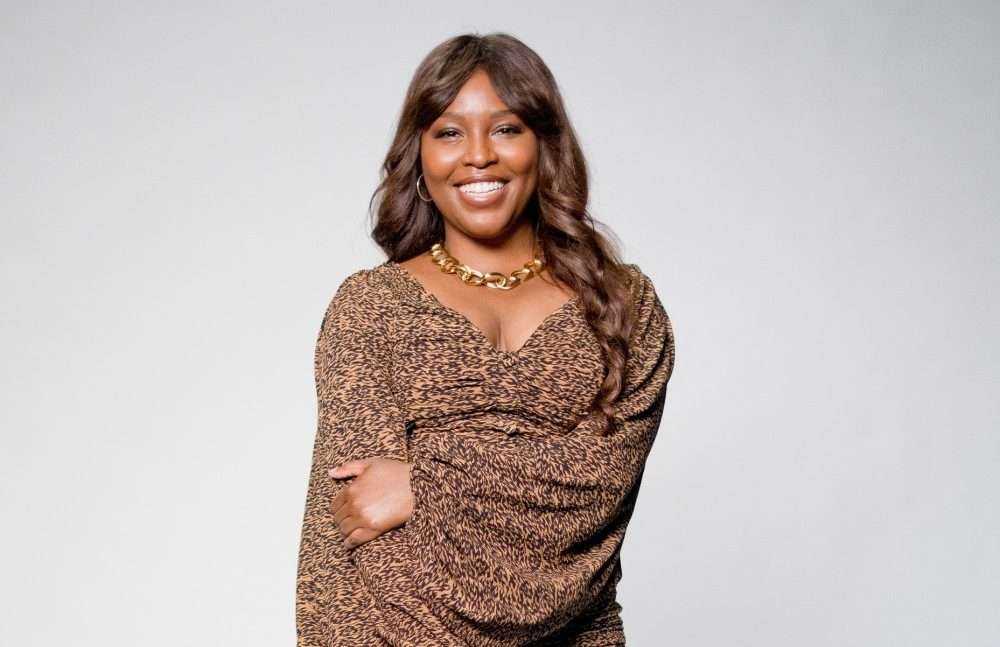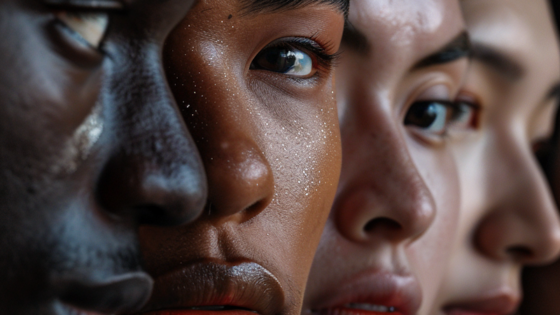on
BY SIMONE J. SMITH
“Girl, when they showed me the wig that I was supposed to wear for the show, I was like nope! No hard front wigs here. You are going to have to find me some lace fronts.”
I started to die of laughter. I had only been on the phone with Aba for about five minutes and she had me rolling. I was interviewing her about her upcoming role on This Hour Has 22 Minutes, which is back for a 29th season with a new time slot (8:00 p.m.), an expanded episode order and new cast members that bring a freshness to the iconic show. The show’s brand of razor-sharp commentary, critical savvy and incisive political satire, is evolving and has now added a larger, younger and more diverse writing staff and cast.
The series is the longest-running comedy series in Canadian history and remains a beloved staple for audiences across the country to engage with the news cycle through humour and satire. With a legacy that has spanned nearly three decades, its reach has also expanded beyond television to cultivate a large and dedicated online following. Since the season 29 premiere on September 14th, 2021, the show’s social media platforms have seen exponential engagement; the series TikTok account alone (which was created less than three months ago) has accumulated over four million likes, 40 million views and has nearly 400K followers.
The show also brought back acclaimed writer and comedians, Brandon Ash-Mohammed (Now Magazine’s “Breakout Star”) and Leonard Chan (Just For Laughs, Halifax and Winnipeg Comedy Festivals), fan favourite correspondents who work with the Toronto field team to deliver a fresh take on politics and culture.
I was very proud to hear that Toronto’s own Aba Amuquandoh had joined the 22 Minutes crew as the youngest, and first Black woman to be part of the main cast. As much as this is a huge accomplishment for her, Aba is not new to the game. She began her professional acting career as a student at the University of Toronto where she went on to co-write and produce the award winning “I Can’t Trust Anyone, Everyone Hurts Me.” It received the Staging Survivance Award presented by Jill Carter. She has also performed with Canadian Comedy Award winning Sketchersons at Comedy Bar, and some of you may have caught her around the city doing a set at Bad Dog Comedy Theatre or The Social Capital for shows such as “Black and Funny,” “Yas Kween,” “SHADE,” and many more.
She was also a featured comedian for Las Culturistas “I Don’t Think So Honey,” hosted by Matt Rogers and Dave Mizzoni, and has starred in Shopify’s Sketch Series, “Mind Your Business,” as well as Second City’s FamCo show, “In The Game.” To top it all off, she, a member of the Emerging Artists Training Ensemble where she worked, shopped her play “Ghanada,” with author Catherine Hernandez.
Aba and I had a hilarious interview, and she was able to share with me more about what’s new at 22, what it’s been like/what it means to be joining the cast of such an iconic show, and how her fresh perspective is helping to reshape the series.
“It was so wild,” Aba began, “When you are a comedian or actor, the competition is severe. It is a daily dose of humble pie because yes, you might be awesome, but so are all the other Black comedians that you are inevitably competing against. They are just as good as you are.”
Aba auditioned for the role in “This hour has 22 minutes,” in the summer of 2020.
“I did a Beyonce Parody, and I got the call to fly out to Halifax. It was a bit of a culture shock. I had to quarantine for two weeks, so I took that time to meet the team virtually and get to know everyone. The first day I arrived on set, it went from 0–100 real quick. The work started right away, I had to calibrate myself to the quickness of the industry.”
Aba and I laughed a little about what it must have been like to be a Black girl, filming on a mostly White show. There was the hair challenge, which I found hilarious, but then there was also adjusting to the needs of the Black woman when it came to her hair and make-up.
I have to give credit to the production crew; they did their very best to help me adapt to the change of pace, and they made sure that all of my requirements, and needs were fulfilled.
“This year, they had the amazing Malarie Glenn (make-up artist), and Lindsay Thorne (make-up artist on show Diggstown) there to help me look fabulous.
There is a lot that people will enjoy in the new season. I get to have a lot of fun doing exactly what I enjoy doing, having fun. I got to do a WHOP parody. It was hilarious. Who knew that 22 minutes would be doing a show like this? One of my highlights was working alongside Aisha Brown. We wrote a parody around an Alanis Morrisette song, and it is the first time I was able to speak about how challenging the pandemic was. Overall, an amazing experience, and I am looking forward to seeing how people receive it.”
African-Canadian actors, actresses, and comedians are blazing a trail in the entertainment industry, and we have to do our best to show them our support. Follow the show on:
Twitter: @22_minutes
TikTok: @thishourhas22minutes
Instagram: @thishourhas22minutes
Facebook: @22minutes
Website: https://www.cbc.ca/22minutes/
Media Site: https://www.cbc.ca/mediacentre/program/this-hour-has-22-minutes
Stay in the loop with exclusive news, stories, and insights—delivered straight to your inbox. No fluff, just real content that matters. Sign up today!
We, as humans are guaranteed certain things in life: stressors, taxes, bills and death are the first thoughts that pop to mind. It is not uncommon that many people find a hard time dealing with these daily life stressors, and at times will find themselves losing control over their lives. Simone Jennifer Smith’s great passion is using the gifts that have been given to her, to help educate her clients on how to live meaningful lives. The Hear to Help Team consists of powerfully motivated individuals, who like Simone, see that there is a need in this world; a need for real connection. As the founder and Director of Hear 2 Help, Simone leads a team that goes out into the community day to day, servicing families with their educational, legal and mental health needs.Her dedication shows in her Toronto Caribbean newspaper articles, and in her role as a host on the TCN TV Network.












